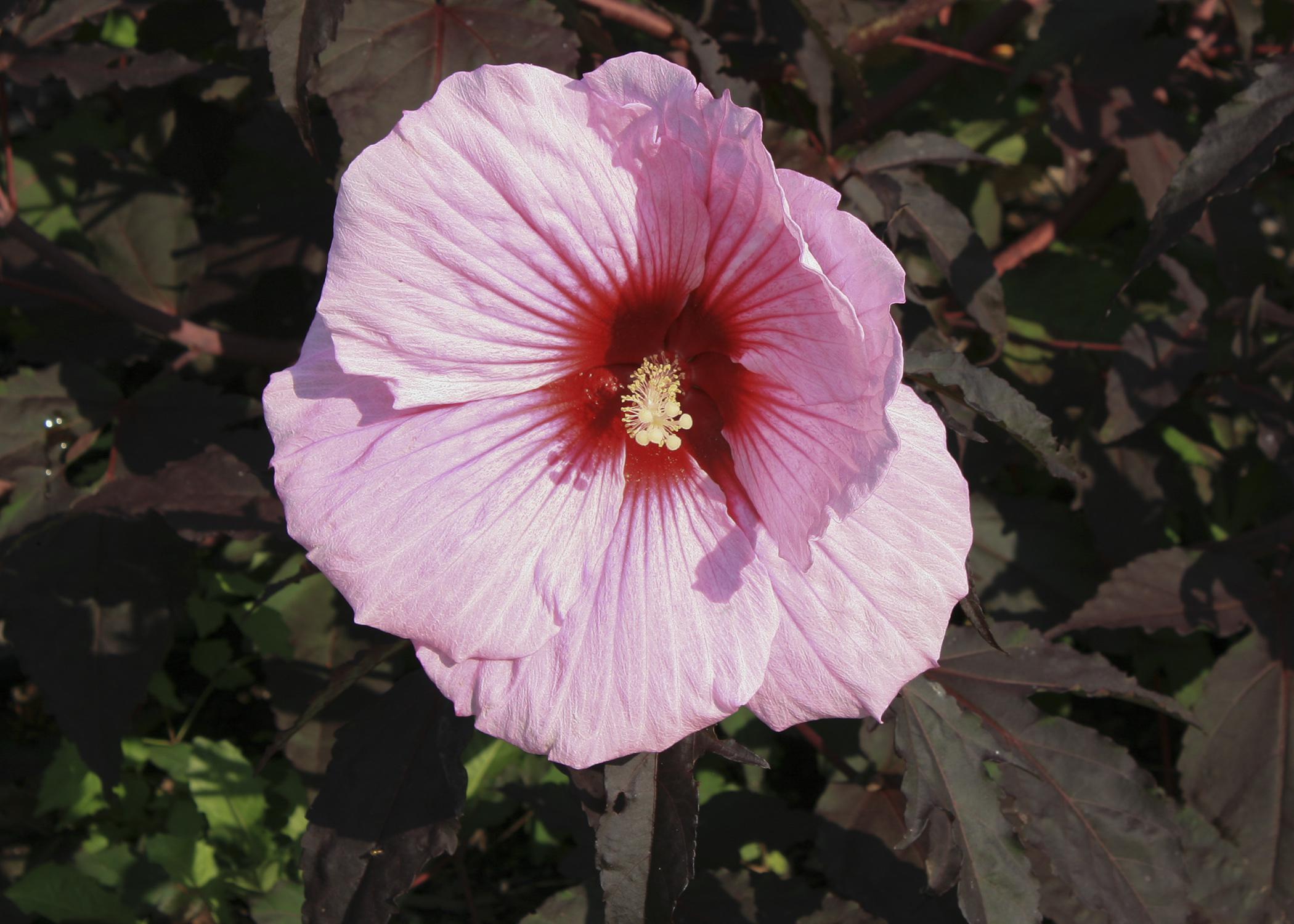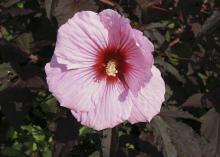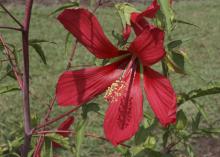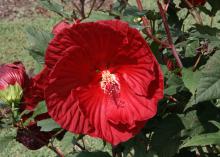Information Possibly Outdated
The information presented on this page was originally released on August 18, 2014. It may not be outdated, but please search our site for more current information. If you plan to quote or reference this information in a publication, please check with the Extension specialist or author before proceeding.
Hardy hibiscus brings unique traits to gardens
I think hardy hibiscuses are must-have summer plants guaranteed to brighten our gardens and landscapes after a long, hot summer. But to many gardeners, the hardy hibiscus is a well-kept secret.
These plants are very different from tropical hibiscuses. The hardy hibiscus is winter hardy, and its foliage is not as glossy as the tropical hibiscus. Despite these differences, both varieties have bright, beautiful flowers.
Hardy hibiscuses add value to our late-summer landscapes with their displays of enormous flowers. Their flowers are sometimes up to 12 inches across, leading to the nickname “dinner plate hibiscus.”
Hardy hibiscuses are bushy plants ranging from 2 to 5 feet tall. Foliage is light to medium green. Some selections even offer burgundy and dark-purple leaves.
The Cranberry Crush hibiscus has blooms of deep burgundy/scarlet. Its large, sheer petals draw your attention inward to the delicate pistil and stamen structure. It is a naturally compact-growing shrub that forms a dense, rounded clump.
Sultry Kiss hibiscus features pretty, pink-fuchsia flowers that can measure up to 11 inches wide with overlapping petals. The plant forms an upright mound with good branching that displays the lobed, burgundy foliage.
Peppermint Flare flowers emerge light pink and mature to white except for wild red flecking throughout the petals. Their name comes from the fact that the flowers resemble a peppermint candy.
The blossoms of Berrylicious are a delicious-looking lavender rose with a deep strawberry-red eye and attractive, ruffled petals. The bright green foliage has leaves that look like those of a maple.
The dinner-plate-sized flowers of the hardy hibiscus hybrids always get most of the attention, but don’t forget about the native species of hibiscus. These plants are found in the swamps and ditches along the Gulf Coast from Texas to Florida.
A favorite native that should be grown more is Hibiscus coccineus, also called Texas Star. This is a tall, multibranched shrub that has a slender growth habit. It is perfect for the back of the landscape bed, where it will display striking, star-shaped, bright-red flowers.
You can cut back hardy hibiscus to about 6 inches in the spring any time before new growth starts to appear. You must be patient, as hardy hibiscus will be one of the last plants in the landscape to start growing in the spring. Get ready to use loppers or a tree saw, as the stems can be quite woody and tough.
So, if you’re ready to feast on a dinner plate full of gaudy color, take a look at some of the different varieties of hardy hibiscus, and plant some in your landscape to enjoy next year.










